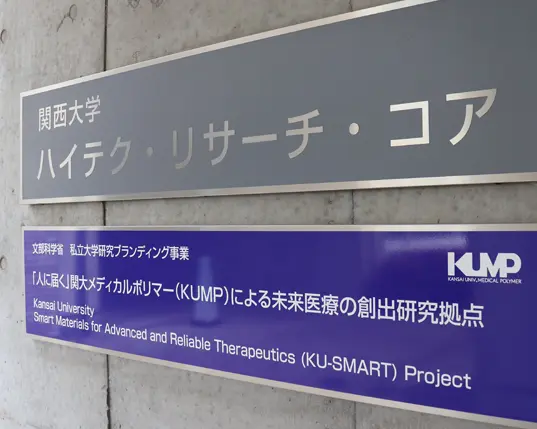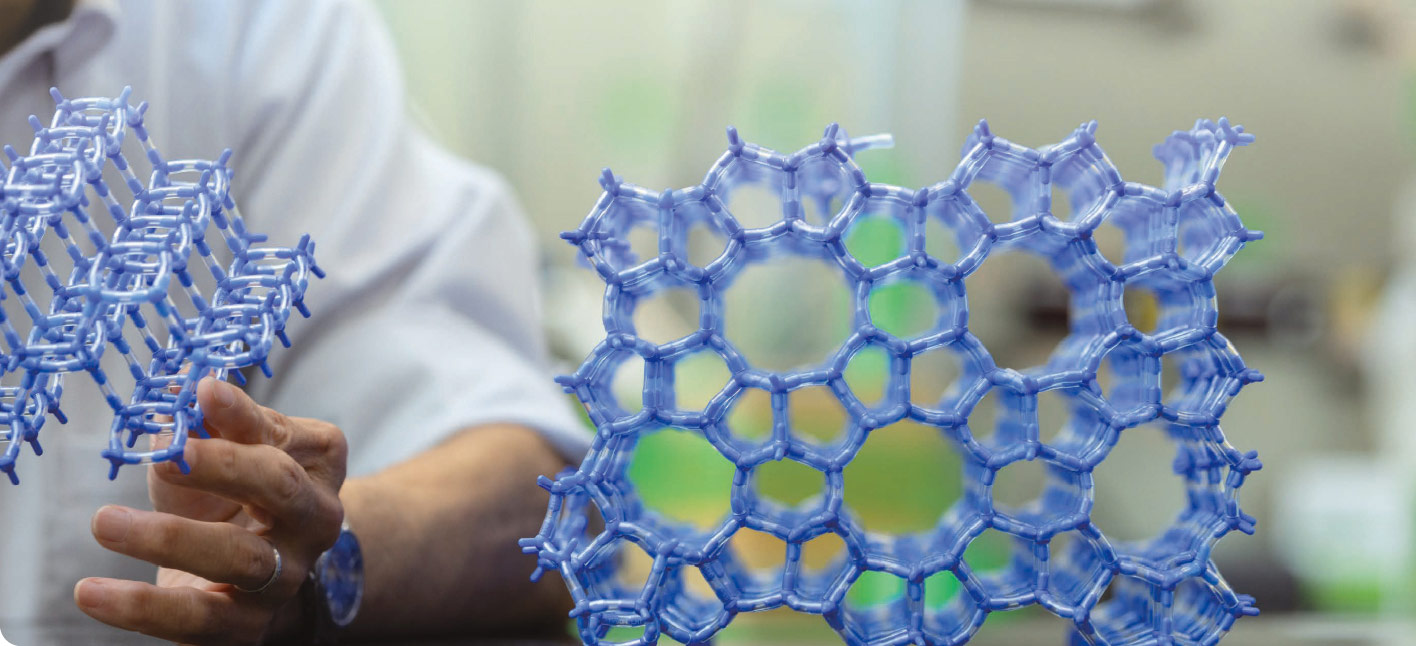

Message
Research Departments
Our activities are the design/synthesis of new substances at the molecular level, the development of high-functional new materials, and the development of elements/devices/systems by combining/integrating such new materials with machines. Our ultimate goal is to productize them and benefit the society. One of the keywords of our department is nanotechnology. In this field, research is conducted in significantly different direction in scale and method: for example, top-down approaches from bigger things to finer things, and bottom-up approaches by self-organized of atoms/molecules level. It is expected that new innovations will be created by organically combining ideas and approaches of these various perspectives, beyond the boundaries of existing fields of research. To realize such a goal, in our department, we will promote the creation of new value by implementing interaction and information exchange between researchers in various fields and by integrating wisdom and knowledge.
Our department aims to conduct a wide range of research and development from basics to applications regarding information processing and communications systems used for information and communication technology (ICT) as well as the software and hardware that enable them. In the basic areas, we are pursuing innovative systems based on completely new ideas by analyzing algorithms and systems from the mathematical and theoretical perspectives, which are the foundations of information processing. As for application research, we will conduct research and development for various application systems that are efficient and highly functional in terms of engineering and also useful to society. We will proceed with the research by planning and implementing projects based on mutual collaboration between researchers in related fields and their new approaches. Researchers’ inspiration for each other enables us to expect the creation of superior approaches. We will leverage such new approaches to develop technologies that lead to new breakthroughs in the ICT field.
A living organism is an extremely elaborate control system having the purpose of living, with various molecules interacting with each other. Our department analyzes and utilizes the unique structures, physical properties, and functions of living organisms and their constituent molecules. Meanwhile, we analyze how living spaces and environments affect human life and mental activities, and make efforts to develop, design, and use new functions in association with audio-visual information processing and robots. Our department solves various problems related to human life and human beings by physical/chemical/biological approaches, sometimes using interdisciplinary perspectives from the social sciences and the humanities. This means we are working on a variety of research and development activities and thus leverage the outcomes for health, medical care, welfare, sports, and various industries.
Aiming at the protection of the global environment and the realization at a sustainable society, our activities cover a diverse and wide range of researches. Energy-related technologies (such as research on energy-saving processes and equipment, fuel cells, and lithium batteries), environmentally-friendly production technologies, CO2 control technologies, and recycling technologies (such as the effective use of food waste, brewer’s grains and soy sauce cake). In addition, researches like urban renaissances, human-environment relation, safety engineering, the maintenance and management of social and artificial infrastructure facilities, disaster prevention and mitigation systems for society and cities, and engineering ethics are also our department’s mission. Our registered researchers’ fields cover almost all fields of the study of the departments of three faculties for science and technology and the Graduate School of Science and Engineering, and even the Faculty of Informatics and the Faculty of Societal Safety Sciences.
Research Centers
Center for Promotion of Strategic Research (CPSR)
Strategic Research Center for Science & Technology (SRCST), established in 2012, was reorganized as Center for Promotion of Strategic Research (CPSR) on its 10th year in April of 2023.
The former SRCST had been conducting large-scale delegated research projects, including projects for the MEXT-Supported Program for the Strategic Research Foundation at Private Universities as well as external collaborative research over the medium-and long-term while playing a role as a comprehensive center that provided a new research platform at ORDIST.
While inheriting the spirit behind the establishment of SRCST, the new CSPR will promote existing research projects conducted by ORDIST researchers while at the same time strategically building a framework to support collaboration between industries, academia, and government continuously fulfill the role of producing new research.
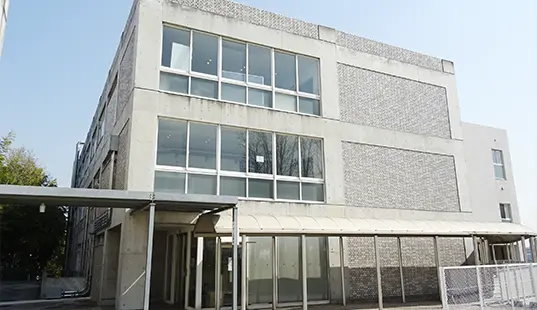
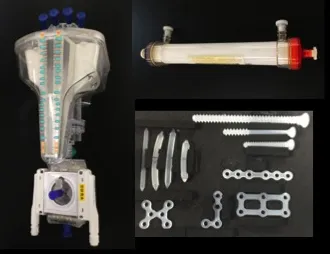
Collaborative Research Center for Engineering,
Medicine & Pharmacology (CEMP)
Today in Japan, we rely on imports for a lot of medical equipment and instruments, and it is hoped that we can realize a society where everyone can lead a safe and healthy life and reduce the physical and economic burdens of both physicians and patients while holding total medical expenses down. Realizing such a society requires further collaboration between medical science / pharmaceutical science and engineering to develop next-generation advanced medical technologies and equipment that can be competitive in the global market. Kansai University has generated various outcomes by conducting joint research/projects and the like with its neighbors such as universities’ faculties of medicine and pharmaceutical sciences, medicine-related research institutions, and medical devices manufacturers.
CEMP was established to proactively promote such medical-engineering-pharmaceutical collaborative research and has played a core role. Our ultimate goal is to contribute to the society by commercializing the outcomes from joint research as new methods of treatment, medical device systems, and the like, working with venture capital firms and medical devices manufacturers.
Research Center for Regional Revitalization (RCRR)
Research Center for Regional Revitalization (RCRR) collaborates with local residents and people in various sectors, including NPOs, national and local administrative agencies, and companies, to work toward the sustainable regeneration of local communities from the perspective of residential environmental improvements. RCRR continues to conduct research and practical activities that create value through co-creation. It is designing regional revitalization while fusing and creating engineering fields centered on construction and civil engineering, social science fields, including public policy and public economics, and humanities fields, including geography. At the time of the establishment, RCRR’s achievements are exemplified by the activities of the Kansai University TAFS (Tamba Aogaki Field Studio) Saji Studio*, which received the Hyogo Prefecture Human-Sized Town Development Award and the Award for Distinguished Service for Town Development from the Ministry of Land, Infrastructure, Transport and Tourism. Additionally, RCRR’s project under the theme of Technology Development Research on Approaches to the Reorganization (Renaissance/Rebuilding) of Housing Complex Danchi** resulted in the reception of the Achievement Award from the Association of Urban Housing Sciences of FY 2016 under the Supported Program for the Strategic Research Foundation at Private Universities of the Ministry of Education, Culture, Sports, Science and Technology. It will further develop the results of these achievements. By expanding the practice area and deepening research on co-creation and methodologies, RCRR will promote revitalization activities in cooperation with local people.
*Awarded “Hyogo Prefecture, Human-Sized Town Development Award” and “Award for Distinguished Service for Town Development from the Ministry of Land, Infrastructure, Transport and Tourism”
**Awarded “Achievement Award from the Association of Urban Housing Sciences of FY 2016”
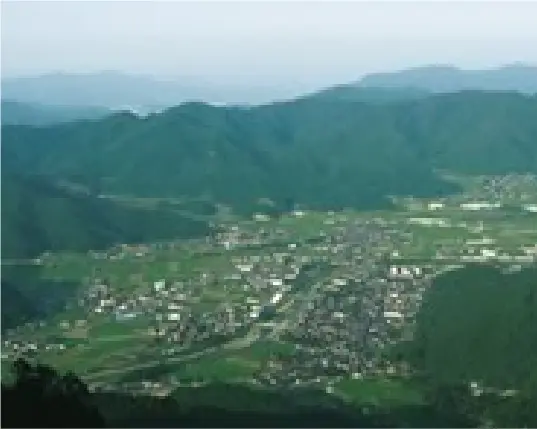
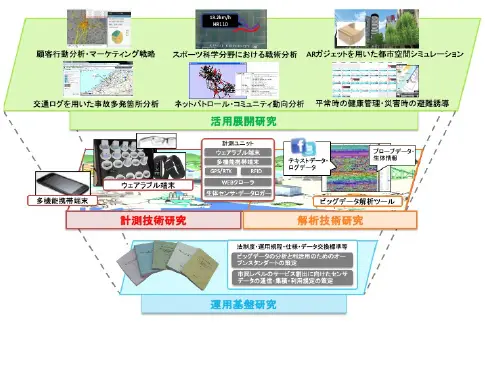
Center for Socio-spatial Information Science
(CSSIS)
With the development of highly sophisticated measuring instruments and associated analysis technologies, applications using data, information, and new findings related to society and spaces are attracting growing attention. Under such circumstances, CSSIS was established in order to work on research on technologies related to social infrastructure that are useful in the field of the maintenance of social infrastructures and disaster prevention/disaster mitigation; and technologies related to social activities that are useful for health management, assessments of situations, strategic analysis, and other situations in everyday life and the area of sports, in a cross-sectional and comprehensive manner.
CSSIS develops socio-spatial information services to provide new findings by applying socio-spatial information-related measurement and analysis technologies to various fields. Moreover, in order to broadly spread the outcomes, we strongly promote industry-academia-government coordination by establishing a cooperative system with a wide range of people and institutions, including researchers inside and outside the university and people from private enterprises and public agencies.
Kansai University Medical Polymer Research Center (KUMP-RC)
Kansai University Smart Materials for Advanced and Reliable Therapeutics (KU-SMART) Project was adopted as FY 2016 Private University Research Branding Project (Type B*), supported by the Ministry of Education, Culture, Sports, Science and Technology. The Ministry's philosophy of this project was "to promote the enhancement of the functions of private universities that make efforts bringing out the feature of the entire university based on its unique researches under the leadership of the president.” To fulfill this philosophy, our project members have proactively disseminated their research outcomes to Japan and the world while increasing the number of joint research with companies and also patents acquired. Through this project, we have deepened cooperation with researchers from Osaka Medical College** and built a rich network through collaboration with the clinicians.
The project reached a milestone of five years at the end of FY 2020. From April 2021, members are continuing their researches at “Kansai University Medical Polymer Research Center (KUMP-RC)” newly established directly under ORDIST, so that its presence and activities will become more apparent. This center provides a platform where our material chemists, mechanical engineers, and medical personnel outside the university can work together. Moreover, we will conduct more medical-engineering collaborative research for clinical research and practical application. In particular, we will further promote joint research with Osaka Medical and Pharmaceutical University aiming to strengthen our cooperation with them by delivering outcomes in terms of not only research activities but also human resource development.
KUMP-RC will maintain its long-term continuous efforts in order to create future medical care, aiming to improve the research brand of the university through the development of research.
*Type B: “nationwide or international efforts that contribute to the development of the economy/society and to progress in science and technology through the enhancement of an advanced and interdisciplinary research base”
**Osaka Medical College has been reorganized as Osaka Medical and Pharmaceutical University in April 2021.
